12 Rare Vintage Clocks That Can Be Surprisingly Valuable
Rare vintage clocks are more than just functional. They’re pieces of art and history. Some clocks stand out because of their craftsmanship, while others may have a rare feature that collectors covet. Over time, a clock’s value can increase due to its unique story or design. If you’re curious about what makes certain clocks so valuable, keep reading.
This post may contain affiliate links, which helps keep this content free. Please read our disclosure for more info.
Patek Philippe 1927 Paperweight Clock
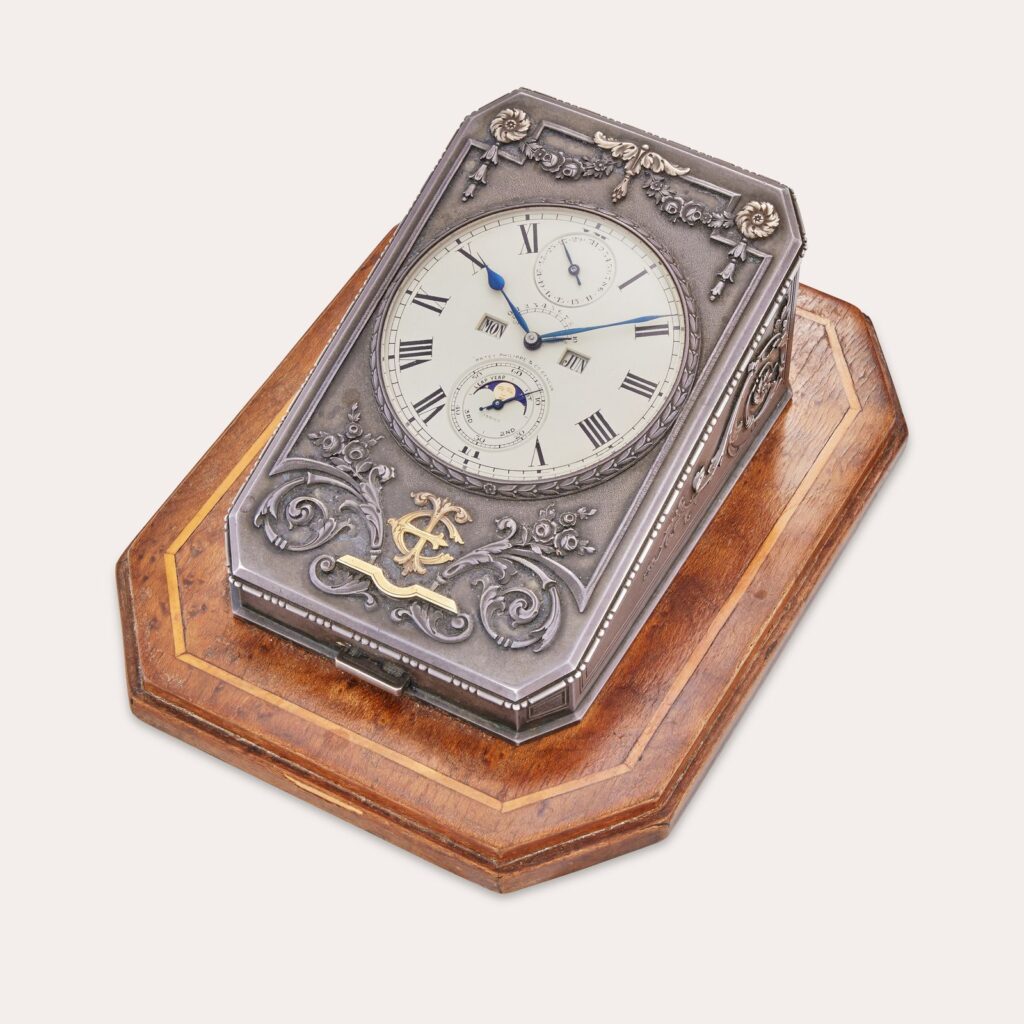
Released in 1927, the Patek Philippe paperweight clock is a rare find, with only three known to exist. This clock was designed as a personal piece for the American collector Thomas Emery, making it unique. The clock features intricate complications that were ahead of its time. Originally, the price was not disclosed, as it was a bespoke item for a private collector. Today, it is estimated to be worth between $500,000 and $1 million due to its rarity and complex design.
The craftsmanship of this clock has made it a highly sought-after item among horological enthusiasts. Its historical connection to Patek Philippe, known for creating some of the most luxurious watches, adds to its prestige. Over the years, the value of this clock has risen substantially as fewer remain in existence. Collectors prize it for its rarity and remarkable engineering. If you come across one, expect to see a significant price tag attached.
Cartier 1926 Art Deco Mystery Clock
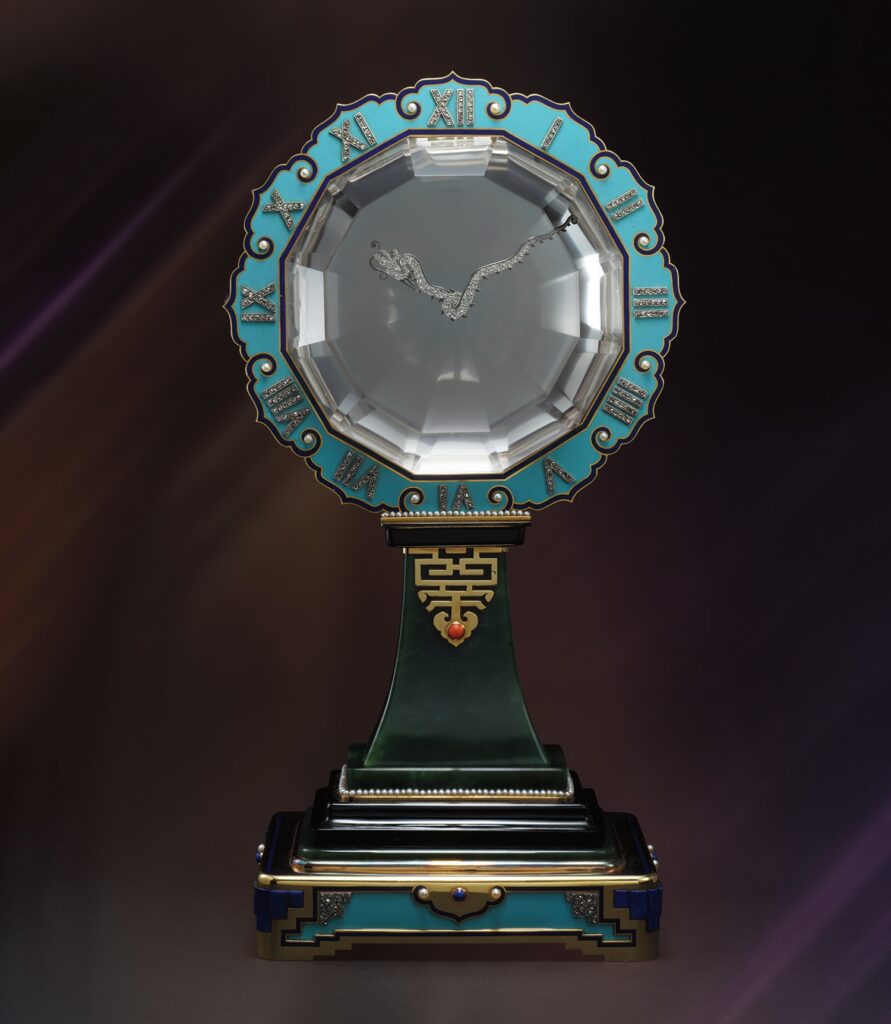
Introduced in 1926, the Cartier mystery clock is renowned for its invisible movement, where the hands appear to float. This clock, created in the Art Deco style, combines Cartier’s signature elegance with a touch of mystery. Made from rock crystal and platinum, it is a stunning example of fine craftsmanship. The price upon its release was not publicly available, but it was an exclusive design. Today, its value can reach up to $300,000, depending on its condition and provenance.
What makes the Cartier mystery clock stand out is its innovative mechanism, which hides the movement from view. This design creates the illusion of hands floating without any visible attachment. The luxurious materials and exceptional design have made it a highly collectible item. It’s a great addition to any collection, particularly for those who admire fine jewelry and timepieces. Cartier’s legacy in creating timeless, high-value clocks ensures this piece remains in high demand.
1835 Breguet Sympathique Clock
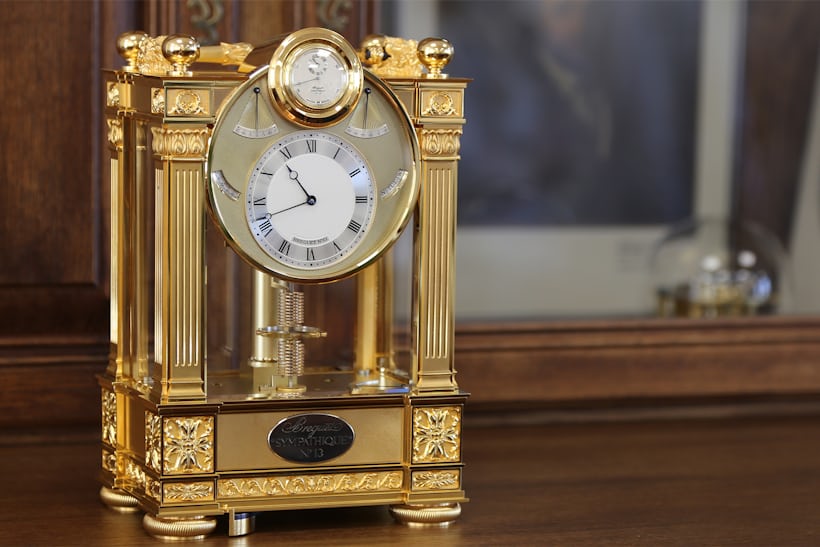
Released in 1835, the Breguet Sympathique Clock is an iconic timepiece that combines a grand clock with a pocket watch. Its groundbreaking design allows the pocket watch to repeat the clock’s chimes automatically. Created by the renowned French clockmaker Abraham-Louis Breguet, this clock was commissioned for the Duke of Orleans. The price upon release was not documented, as it was a luxury item for royalty. This clock sold for an astounding $6.8 million at auction in 2019, setting a new record for a grandfather clock.
The Breguet Sympathique Clock is celebrated for its innovation and craftsmanship, which pushed the boundaries of horology in the 19th century. Its intricate mechanisms, including the automatic chiming pocket watch, make it a masterpiece. Its historical significance, being a commissioned piece for French royalty, increases its value. Today, this clock is one of the most valuable and rare timepieces, with its price only increasing over time. For collectors, owning a piece like this is a true testament to the evolution of clockmaking.
1935 Rene Lalique ‘Deux Figurines’ Clock
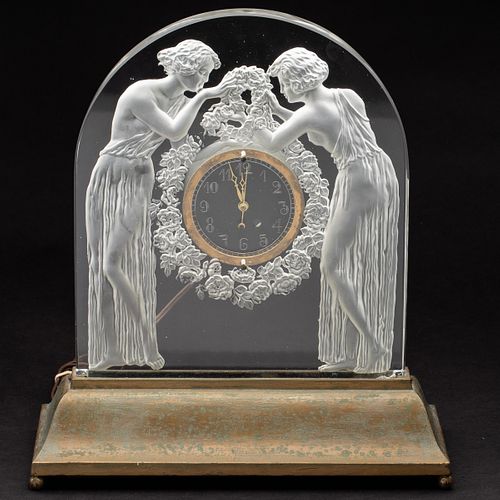
Crafted by the famous glass artist Rene Lalique in 1935, the Deux Figurines clock is an exquisite example of Art Deco design. Made from clear and frosted glass, it features two figures, adding a touch of mystique to the timepiece. The clock’s unique design makes it highly collectible, particularly for fans of Lalique’s glass art. The original price was not publicly disclosed, but it was seen as a luxury item. Currently, similar models are valued between $15,000 and $20,000, depending on condition.
Lalique’s use of glass and his mastery of Art Deco design have made this clock a rare find. It stands out not just as a functional timepiece but also as a work of art. Its elegant design and craftsmanship reflect the Art Deco movement’s emphasis on luxury and innovation. The clock is sought after by both clock collectors and Lalique enthusiasts. Its rarity and timeless beauty continue to make it a prized piece in the world of vintage collectibles.
1870s E. Howard and Co. Marble Train Station Clock
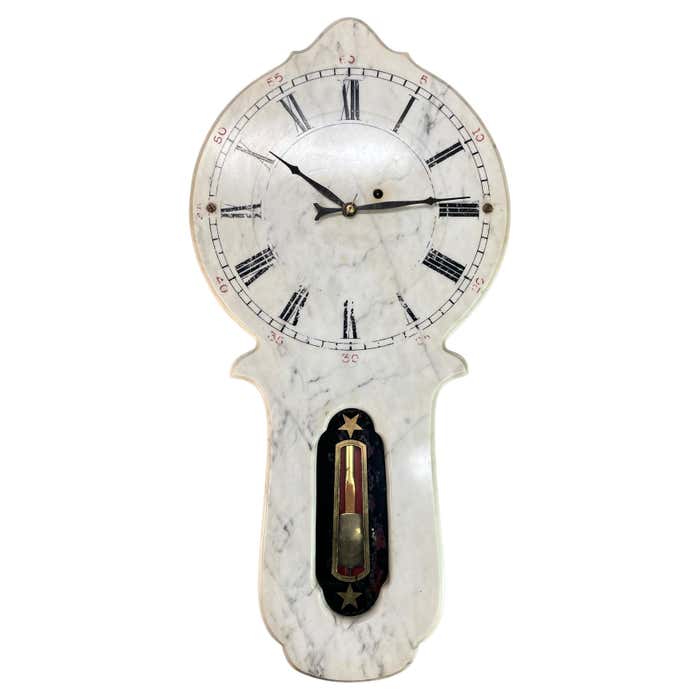
Produced in the 1870s by the renowned clockmaker E. Howard and Co., this marble train station clock is a rare example of 19th-century craftsmanship. Designed for public spaces, the clock features a robust marble casing that has stood the test of time. At the time of release, the price was not publicly recorded, as it was intended for use in train stations. Today, its value is estimated at around $2,800, reflecting its historical significance and durability.
E. Howard and Co. was known for producing high-quality, reliable clocks, and this model is no exception. Its sturdy design made it ideal for busy stations, where accuracy and durability were crucial. The clock’s historical connection to American transportation adds to its appeal. As time passed, this clock became a valuable collectible due to its rarity and craftsmanship. Its market value continues to grow, especially as more collectors seek out pieces with historical importance.
Ansonia ‘Regulator No. 14’ Wall Clock
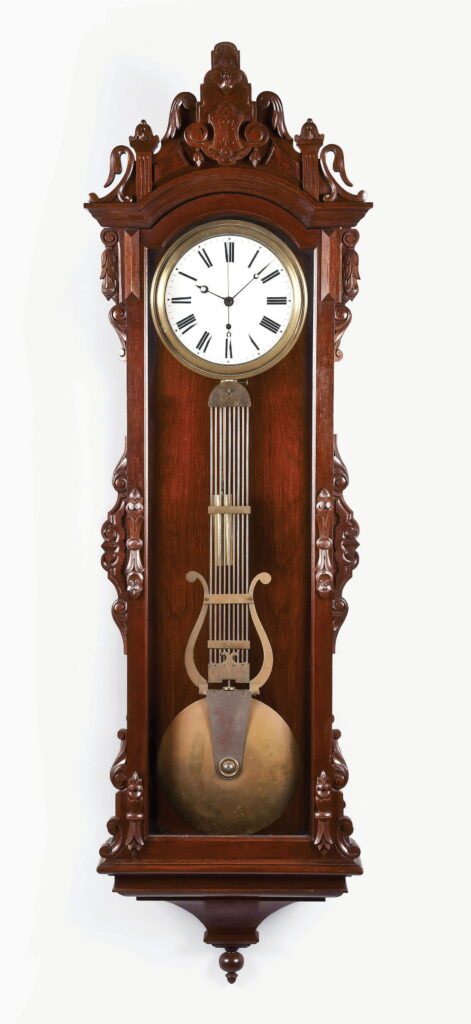
The Ansonia ‘Regulator No. 14’ wall clock, introduced in the late 19th century, is celebrated for its precision and elegant design. Ansonia Clock Company was well-known for producing high-quality timepieces during this period, and this model is a prime example of their craftsmanship. Originally, the price was not widely publicized, but it was considered an upscale model for its time. Today, similar models can be valued around $8,400, depending on their condition. Its combination of functionality and decorative appeal makes it a popular item among collectors.
Collectors appreciate the ‘Regulator No. 14’ for its reliability and accurate timekeeping. The clock’s simple yet attractive design makes it a timeless piece, often sought after by enthusiasts of antique clocks. Its ability to stand the test of time both in functionality and design speaks to its quality. As one of Ansonia’s finest regulators, it holds a special place in the world of vintage timepieces. This clock continues to appreciate in value as more collectors recognize its historical and mechanical significance.
Chelsea Clock Co. Pilot House Clock
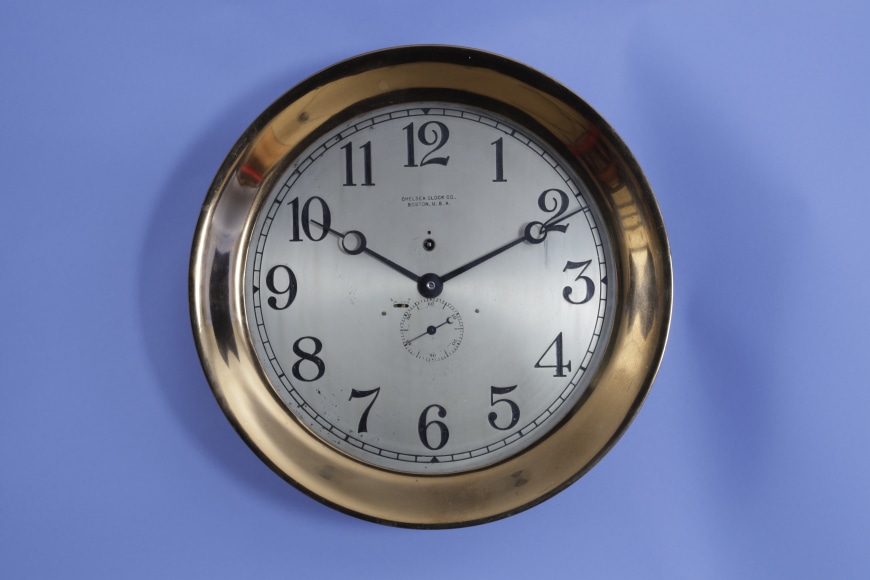
The Chelsea Clock Co. Pilot House Clock, made in the early 20th century, was designed for use in nautical environments. Its rugged construction and maritime design make it a highly collectible item. Initially, the clock was used by sailors to ensure accurate timekeeping during their voyages. While the original price is unknown, these clocks are now valued at approximately $14,400. Their historical connection to maritime navigation adds considerable value to the piece.
Chelsea Clock Co. is known for producing high-quality nautical clocks that were widely used in the United States Navy. The Pilot House Clock, in particular, stands out for its accuracy and durability. Its sleek, functional design and strong connection to American maritime history make it highly sought after by collectors. Today, this clock is considered a symbol of the era of steamships and naval exploration. Its current market value reflects its importance as a rare and valuable collectible.
Seth Thomas ‘Regulator No. 8’ Wall Clock
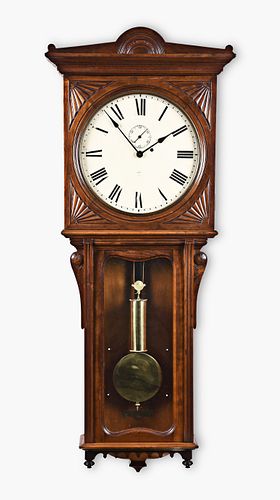
Released in the early 20th century, the Seth Thomas ‘Regulator No. 8’ wall clock is known for its exceptional timekeeping and minimalist design. Seth Thomas Company, known for producing accurate and reliable clocks, created this model with simplicity and precision in mind. The original price was not widely recorded, as it was considered a high-quality timepiece for domestic use. Today, the ‘Regulator No. 8’ is valued at around $5,795. Its accuracy and clean lines make it a popular choice for collectors.
The ‘Regulator No. 8’ is celebrated for its straightforward design and precise performance. As one of Seth Thomas’s most popular regulators, it represents the company’s commitment to quality. Its simplicity, combined with the craftsmanship, makes it a versatile piece that complements many interior styles. The clock’s historical value and functional design have helped it maintain its appeal. As a result, its market value continues to hold strong in the world of vintage clocks.
D.J. Gale’s Astronomical Calendar Wall Clock No. 3
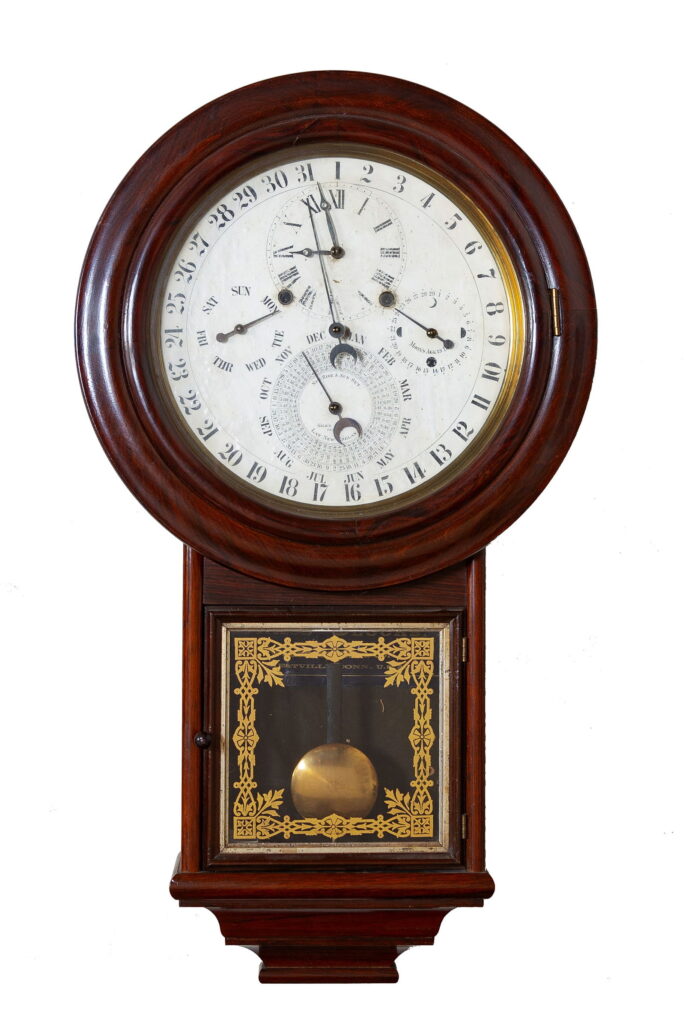
Manufactured in the early 20th century, D.J. Gale’s Astronomical Calendar Wall Clock No. 3 is a rare timepiece with both calendar and astronomical features. The clock was designed by D.J. Gale, a clockmaker known for his precision and intricate designs. The original price was not publicly recorded, as it was a custom-made piece. Currently, similar models are valued at around $3,900, depending on their condition. Its dual calendar and astronomical functions make it a sought-after item for collectors.
D.J. Gale was known for creating specialized timepieces with additional functions, such as this astronomical calendar clock. The clock’s calendar feature allowed users to track both the time and specific celestial events, making it a unique and valuable piece. Its precision and versatility have made it a favorite among collectors of rare clocks. The combination of craftsmanship and utility ensures that this clock remains a desirable item. Today, it continues to be highly valued for its historical and functional significance.
Ithaca Bank Calendar No. 2 Wall Clock
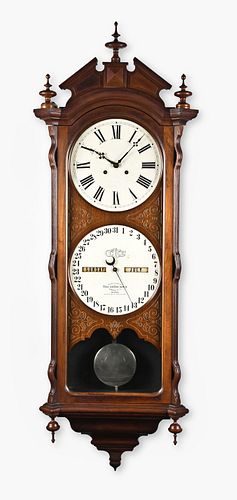
Produced in the late 19th century, the Ithaca Bank Calendar No. 2 Wall Clock is prized for its unique calendar feature and decorative design. Ithaca Clock Company, a well-regarded clockmaker, was known for creating reliable timepieces during this period. The original price is not available, but the clock was a luxury piece meant for public spaces. Today, similar models can fetch around $6,800 due to their historical significance and rarity. Its combination of calendar functionality and beautiful design makes it a sought-after item among collectors.
The Ithaca Bank Calendar No. 2 features an intricate, detailed design that sets it apart from other wall clocks of its time. Its calendar feature allows for both timekeeping and the tracking of days, making it a functional and attractive piece. The clock’s historical context, being used in banks and other public places, further adds to its appeal. Its market value has risen as collectors seek out pieces with both decorative and functional qualities. Today, it continues to be a prized example of late 19th-century clockmaking.
Seth Thomas Flora Wall Clock
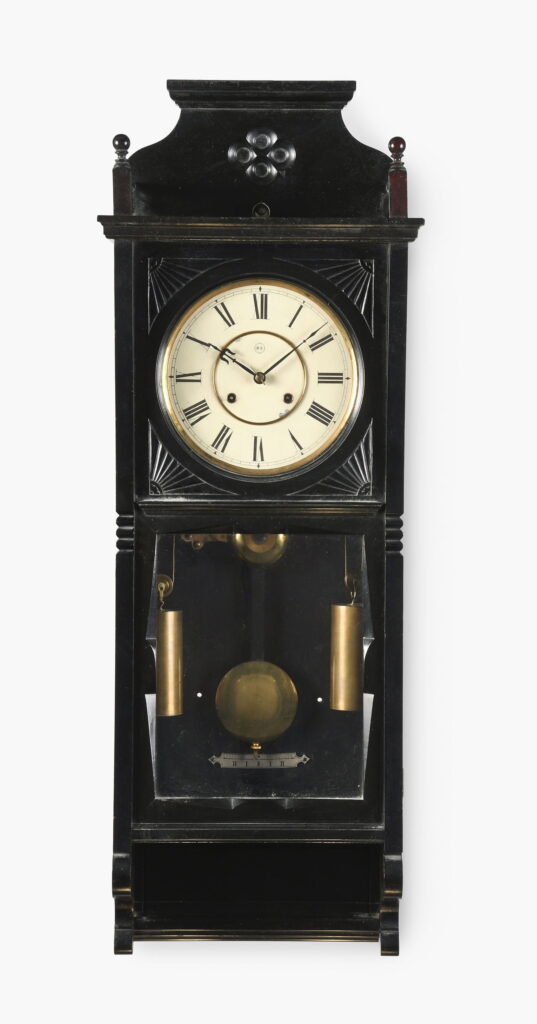
Released in the early 20th century, the Seth Thomas Flora Wall Clock is recognized for its intricate floral design and high-quality craftsmanship. Seth Thomas Company, a prominent American clockmaker, was known for producing precision timepieces. The original price is unknown, but it was considered a luxurious and well-crafted timepiece for the time. Today, the Seth Thomas Flora Wall Clock is valued at approximately $3,300. Its delicate, floral motifs and reliable timekeeping make it a favorite among collectors.
The Flora Wall Clock features beautifully detailed floral patterns, showcasing Seth Thomas’s attention to decorative elements. In addition to its decorative appeal, the clock is known for its reliability and precision, characteristics that were highly valued by collectors. Seth Thomas clocks are respected for their craftsmanship, and this particular model exemplifies the company’s commitment to producing both functional and aesthetically pleasing timepieces. The Flora Wall Clock remains an attractive item for vintage clock enthusiasts. As demand for Seth Thomas timepieces grows, so does the value of this clock.
Jerome and Co. Double Dial Calendar Wall Clock
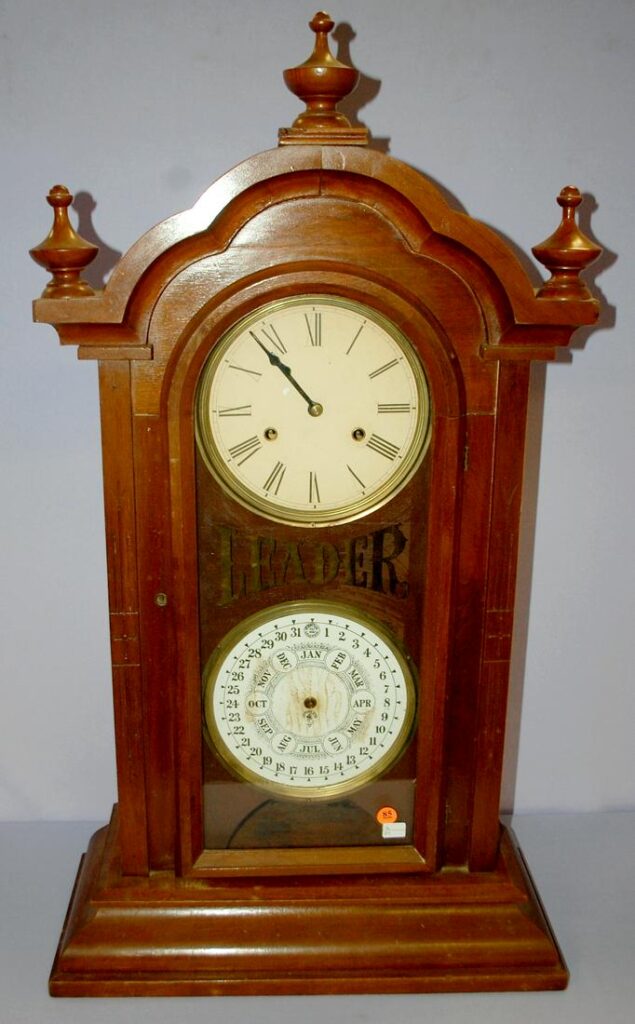
Manufactured in the late 19th century, the Jerome and Co. Double Dial Calendar Wall Clock is distinguished by its dual calendar feature and ornate design. Jerome and Co. was known for producing intricate and high-quality timepieces, and this clock is a prime example. The original price was not available, as it was a high-end item for collectors at the time. Today, the clock is valued at approximately $2,400. Its unique double calendar feature and its detailed design have made it a highly collectible item.
The clock features two dials-one for timekeeping and another for the calendar-making it a functional and attractive piece. Its ornate design includes beautiful detailing, which sets it apart from other clocks of the same period. Jerome and Co.’s attention to quality ensures that these timepieces remain valuable even decades after their creation. This clock, with its specialized functions and beautiful craftsmanship, continues to appeal to collectors. Its market value reflects its rarity and the lasting legacy of Jerome and Co. as a clockmaker.
This article originally appeared on Avocadu.
